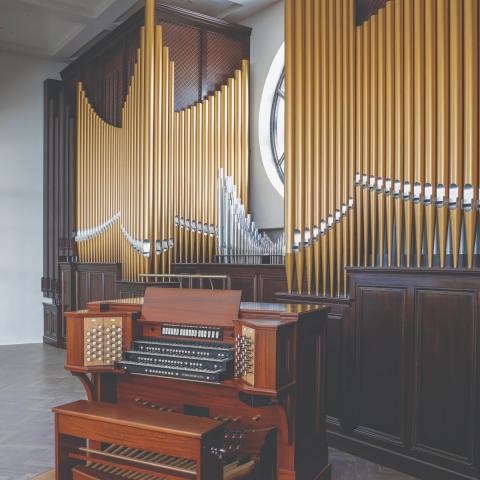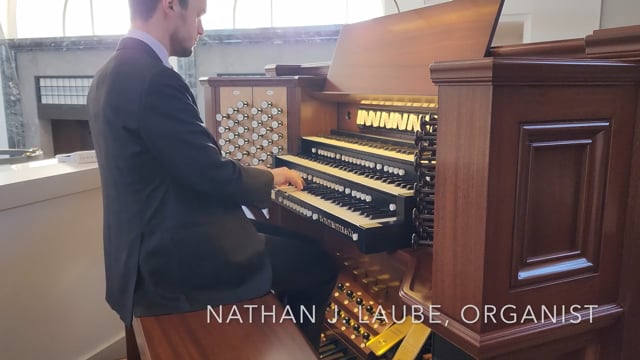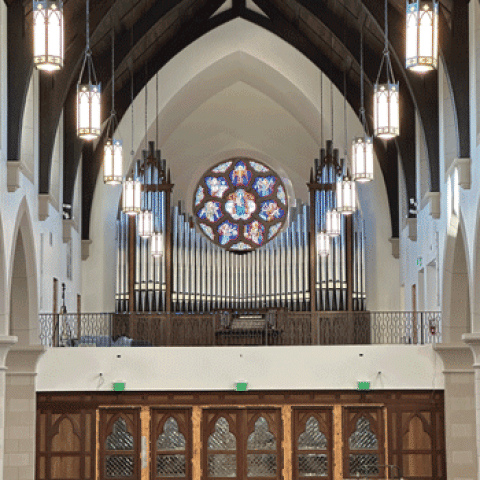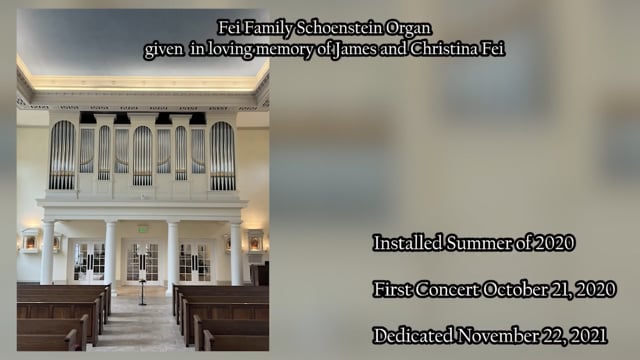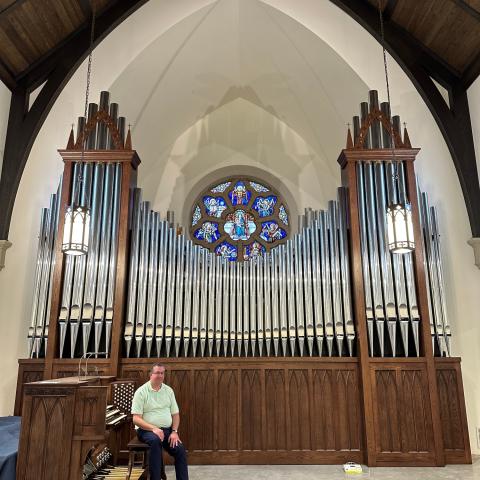
Schoenstein & Co. Pipe Organ Builders, Benicia, California, has built a new organ for Belen Jesuit Preparatory School, Miami, Florida. Schoenstein Opus 182 comprises 30 voices, 33 ranks, 1,833 pipes over three manuals and pedal.
The Great and Swell are ensembles centered around a variety of 8′ diapason tone. The Swell chorus reeds are English with Willis-style shallots. In the Choir, a Bourdon is paried with a Salicional (an echo principal), drawing inspiration from the French Fonds doux. The Belen organ also features the Tuba Ignati, a special solo reed that carries a full-bodied sound with lots of French brilliance. Of note is the large, independent Pedal division, which includes a set of three independent diapasons at 16′, 8′, and 4′. A Tromba and Chalumeau offer more variety and French-flavored fire to the division, leaving the 32′ and 16′ reeds enclosed for maximum flexibility.
The Chapel of Our Lady of Belen was opened in the summer of 2022, and the organ installation began immediately after the opening. The chapel provides a warm, ringing acoustic well-suited to the organ.
The organ was dedicated in a recital by Nathan Laube on March 5, 2023, as the final performance of the Miami Winter Organ Festival.
Schoenstein Opus 182 is featured on the cover of the May issue of The Diapason: www.TheDiapason.com
See their video: https://www.thediapason.com/videos/schoenstein-opus-182-belen-jesuit-preparatory-school-miami-florida
For information: schoenstein.com
Other organ builder news
Kegg Organ, Christendom College

